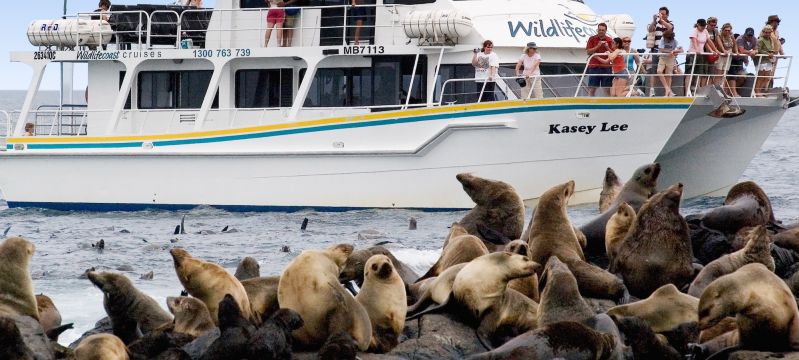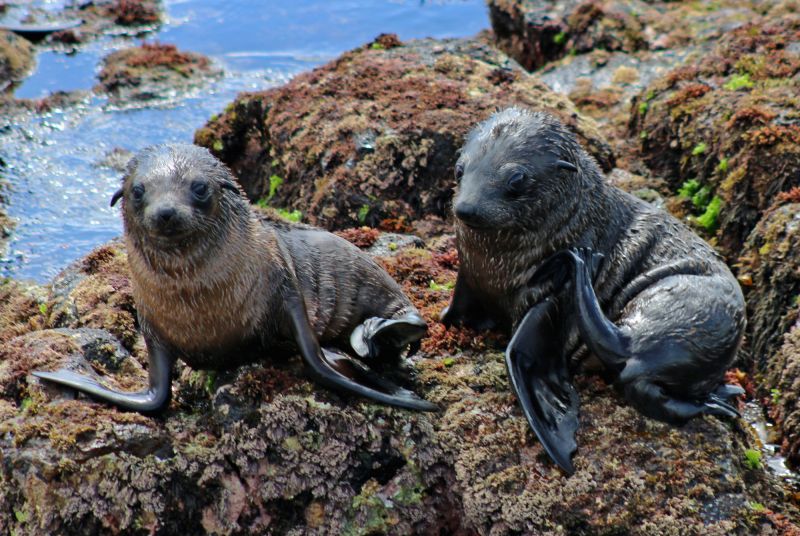The Australian Fur Seal (Arctocephalus pusillus) is the largest of the fur seal family, with males growing up to 250cm in length and 360kg in weight. The females are only about half the size, growing to only 120cm and 110kg in weight. In addition to size, male, female and juvenile fur seals differ considerably in colour. Males appear a dark brown or grey, whereas females are much paler with a light brown or cream upper chest, often referred to as their ‘bib’. Newborn pups appear black, before moulting to reveal their brown-silver coat.
Australian Fur Seals are found around the south-eastern coast of Australia, ranging from the northern New South Wales waters, around southern Tasmania through to South Australia. They gather in large numbers on rocky ledges and reefs where they rest between hunting trips. Juveniles are often observed playing in the water as their confidence grows, waiting for their mother to return from sea.
Where can I see the Australian Fur Seal with an expert guide?
Wildlife Coast Cruises - Seal Watching Cruise (2 hours)
Wildlife Coast Cruises are based out of Melbourne and offer daily departures where guests are taken to visit ’Seal Rocks’, home to Australia’s largest fur seal colony of over 20,000 individuals.

Image courtesy of Wildlife Coast Cruises
Breeding season begins in early summer (between December and February) where males return home after 10 months at sea. The females will give birth to a single pup, which she can recognise through their unique smell and sound. Around this time, males will establish territory, maintaining that through vocal ‘barking’ more so than physical altercations, however, if other males ignore these boundaries, physical violence through fighting will occur. Approximately a week after giving birth, the females will find a partner and mate again in preparation for the following summer.
Following from the breeding season, the adults will return to sea, where the males will stay until next year. Here they hunt for small fish, octopus, squid and crustaceans. The females will then return to the colony and suckle their pups whilst regaining energy for their next trip. This suckling will continue for at least six months until the pup starts eating solid foods.

Image courtesy of Wildlife Coast Cruises
In the water, they are extremely quick and agile which allows them to reach these depths and cover plenty of area in one breath. On land, their big awkward-looking flippers make it difficult for them to walk easily, so they move in more of a ‘shuffling’ motion. If required to move quickly, they can accelerate into a fast ‘gallop’, however, this takes a lot of energy.
FAQs
Q: How deep do Australian Fur Seals dive?
A: Adults will dive to depths of up to 200 metres and can hold their breath for over seven minutes at a time.
Q: How do they keep warm, especially spending so much time at sea?
A: Fur seals have two layers of fur. The first is an outer layer of ‘guard hairs’, with a dense underfur of fine hairs beneath. This underfur has waterproof properties due to the combination of oils and sweat.

